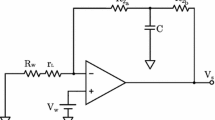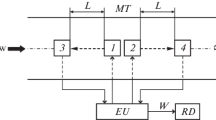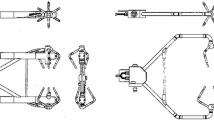Abstract
An anemometer which determines flow velocity by ionizing air and sensing the convective displacement of the ions is described. It is suited to measurement in low speed, highly unsteady gas flows. Comparisons to hot wire spectra suggest the corona anemometer has adequate frequency response to make it a useful tool for fluid dynamics measurement.
Similar content being viewed by others
References
Barat, J. 1982: Gas flow measuring device. US patent 4,345,478
Bradbury, L. J. S.; Castro, I. P. 1971: A pulsed-wire technique for velocity measurement in highly turbulent flows. J. Fluid Mech. 49, 657–692
Durbin, E. J. 1969: Mass flow meter apparatus. US patent 3,470,741
Durbin, E. J. 1974: Fluid velocity meter. US patent 3,831,445
Lindvall, F. C. 1934: Glow discharge anemometer. Electr. Eng. 53, 1068–1073
Perry, A. E. 1982: Hot wire anemometry. Oxford: Oxford Univ. Press
Reithmuller, M. 1977: Laser-Doppler velocimetry. In: Measurement of unsteady fluid dynamic phenomena (ed.: B. E. Richards). New York: McGraw-Hill
Van Dyke, M. D. 1969: The electrostatics of a needle normal to a plane. Proc R. Soc. London Sect. A 313, 471–475
Author information
Authors and Affiliations
Rights and permissions
About this article
Cite this article
Durbin, P.A., Mckinzie, D.J. & Durbin, E.J. An anemometer for highly turbulent or recirculating flows. Experiments in Fluids 5, 184–188 (1987). https://doi.org/10.1007/BF00298459
Received:
Issue Date:
DOI: https://doi.org/10.1007/BF00298459




